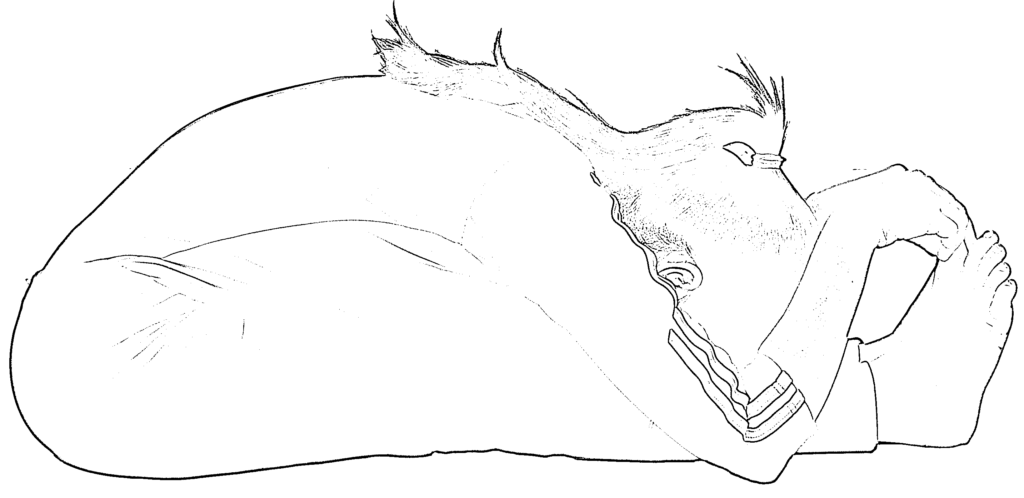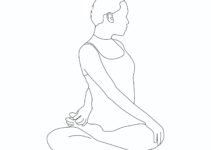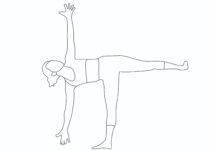
Paschimottanasana meaning
Paschimottanasana is a Sanskrit word consisting of three words: Paschima means West or Back, Uttana means intense stretch, and Asana shows a yoga pose. In Hindi, Paschimottanasana is known as पश्चिमोत्तानासन. The yoga pose is pronounced as POSH-ee-moh-tan-AHS-anna. Its name is Seated Forward Bend, Intense Dorsal Stretch, Fierce or powerful Pose and Ugrasana. The Seated Forward Bend yoga benefits all body parts and organs. The yoga pose is good for weight loss.
Know everything about Paschimottanasana-All info
- Paschimottanasana meaning
- Steps of Paschimottanasana
- Health benefits of Paschimottanasana
- Top ten facts about Paschimottanasana
- Precautions and contraindications
- Beginner tips for Paschimottanasana
- Preparatory pose of Paschimottanasana
- Follow up pose of Paschimottanasana
How to do Paschimottanasana Steps
- First, sit on the ground, stretching both legs outward.
- Toes should remain together, pointing forward.
- Now, Inhale, raise your arms and bend the body forward, exhaling as far as possible.
- While bending forward, do exhaling.
- In the final stage, interlocked fingers should be beyond the toes, and the nose should touch the knees.
- Initially, do it for 5 seconds and gradually try to maintain the pose as long as you feel comfortable.
- Inhale and come to the original position.
- This is one round. Initially, do two games.
- As per your practice, you may increase the number of rounds and the duration of maintaining the pose.
10 Health Benefits of Paschimottanasana
- Spine: The asana gives suitable stretches and tones to the spine and is one of the best yoga poses for the spinal column’s and associated nerves’ health. Since it is good for the spinal nerves, it saves the whole body accordingly.
- Belly fat: This is one of the effective sitting-forward bending yoga poses that are good for burning belly fat.
- Weight loss: This asana gives adequate stretching to the entire body, especially the back part of the body, thus helpful in melting fat.
- Sexual diseases: The regular practice of the asana gives direct massage to the pelvic region, thus helpful for various sexual disorders such as menopause, menstrual discomfort, etc.
- Diabetes: It provides adequate massage to the pancreas and forces the endocrine gland to release insulin, thus ensuring the prevention and management of diabetes.
- Flatulence and constipation: The abdominal organs massage improves digestion and prevents constipation and flatulence.
- Kidney: The practice of this asana is also good for the kidney, liver, spleen, and adrenal glands.
- Stress: Paschimottanasana is well known for its utility in harmonising nervous and pranic energies within the body. Thus, it is quite effective for stress, anxiety, and depression and helps to bring about meditation.
- Hamstrings: It is beneficial for hamstrings.
- Appetite: The asana helps to develop an appetite.
Top 7 Facts about Paschimottanasana
- This is the single yoga pose in yoga, known as Ugrasana or Fierce yoga pose.
- It is known for stretching, toning, strengthening, and massaging.
- Though it is an intense dorsal stretch, it effectively combats stress, anxiety, and depression and prepares one for meditation.
- It makes your spine strengthen, refreshing and supple.
- It is the best back stretching yoga pose when one does the advanced one.
- Somehow, it is also related to ‘the mother system of yoga’.
- Asana was advocated by yogi Gorakshanath.
Precautions and contraindications of paschimottanasana
Pschimottanasana shouldn’t be performed in the following conditions.
- Abdominal ulcer
- Asthma
- Diarrhea
- Back injury
- Pregnancy
- Sciatica
- Slipped Disc
Beginner tips for paschimottanasana
To perform paschimottanasana technically, right is a challenging task. It requires the practice of weeks and months. On the other hand, one shouldn’t bend forward beyond a specific limit; otherwise, it can cause severe back pain. Initially, one should bend forward as far as he feels comfortable. After developing back flexibility and back muscle suppleness, one can perform paschimottanasana.
Preparatory yoga poses for paschimottanasana
- Dandasana
- Uttanasana
- Janu Sirsasana
- Balasana
- Shashankasana
- Yoga mudra
Follow up yoga poses of paschimottanasana
- Suptavajrasana
- Bhujangasana
- Shalabhasana
- Ardha Ustrasana
- Ustrasana
- Vakrasana
- Ardha Matsyendrasana






I just read you blog, It’s very knowledgeable & helpful.
Thanks
Amazing content..good to read and perform..!!
Keep it up for general well-being
Nice and scientific based write up
Hi, i am reading your articles from a long while and have learnt a lot. You are truly inspiring man, i am always excited for your upcoming Post.
Thank you because it helped me to do my project